Ronda is a small town located in Andalusia, in the Spanish province of Malaga. It has only 36,000 inhabitants. Although unassuming, it is unparalleled when it comes to views! What makes Ronda exceptional? Well, the El Tajo gorge cuts the town in half, creating its two parts: the older La Ciudad and the newer El Mercadillo.
Ronda is truly beautiful. Charming, traditional houses, intriguing landmarks, and picturesque surroundings. I highly recommend visiting this city during your stay in Spain.
In this article, you will read about the most interesting places in Ronda. Welcome to my guide!
Table of Contents
El Tajo Gorge
The El Tajo Gorge is half a kilometer long, with a height exceeding 100 meters. For many years, it prevented access to La Ciudad, the oldest district of Ronda. Due to the fact that the width of the gorge is only 50 meters, the city looks as if it were split in half by a crack in the rock. Hence its name: “el tajo” means “the cut” in Spanish. In reality, the gorge was carved by the Guadalevín River.
For those who enjoy hiking, there is the possibility of descending into the gorge. The trail begins in the western part of La Ciudad. Remember to wear appropriate footwear suitable for hard and rocky terrain. Although initially the trail leads through a comfortable path, it later becomes more challenging, but the landscape around it rewards every effort!
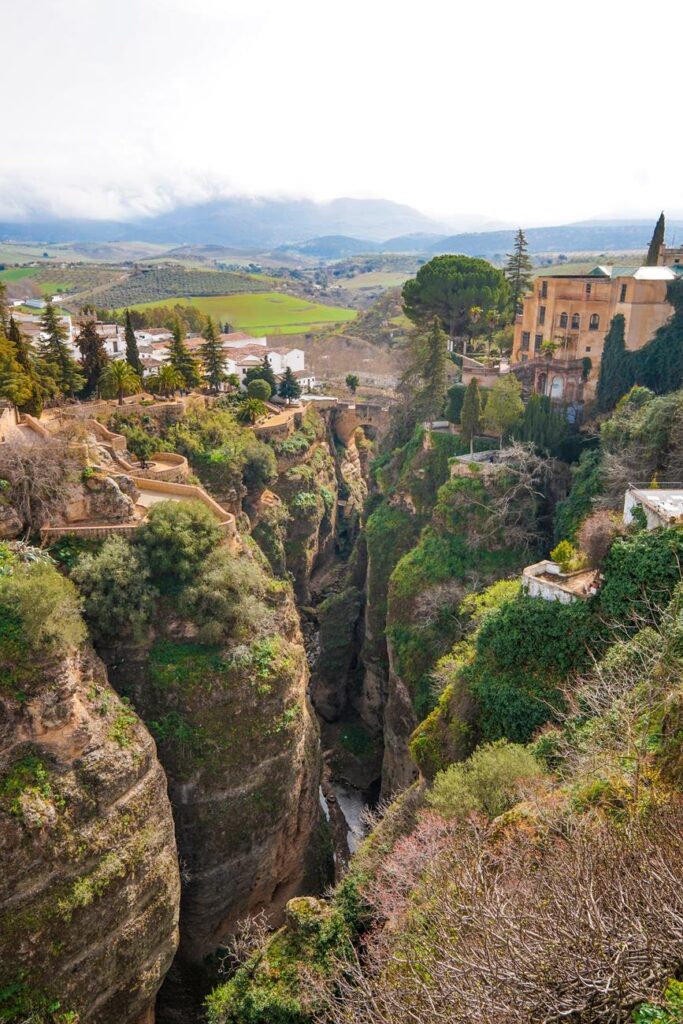
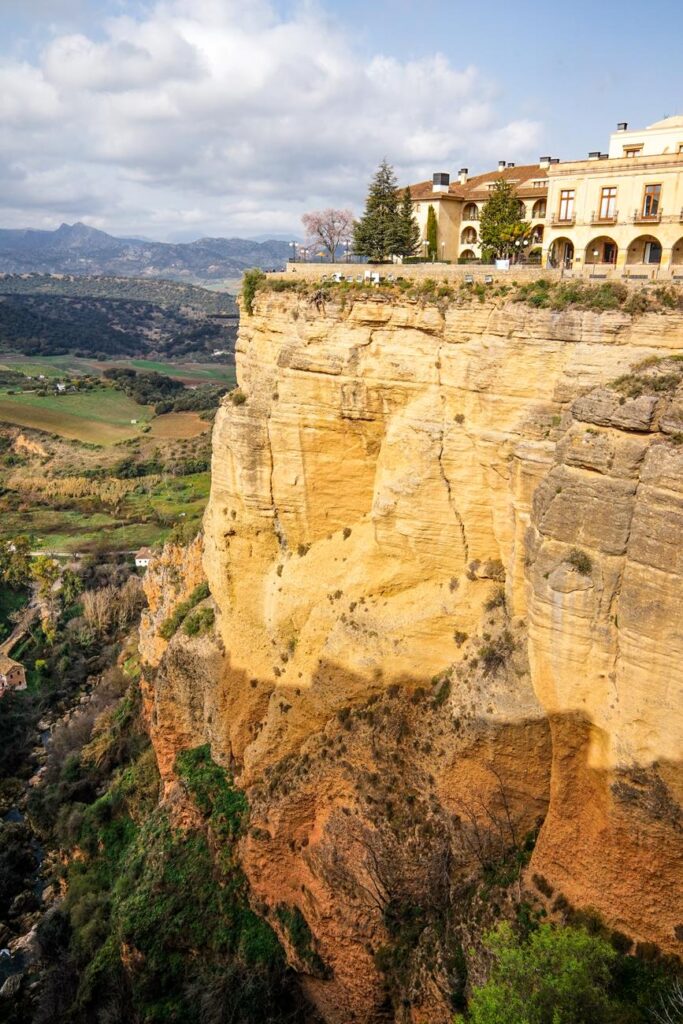
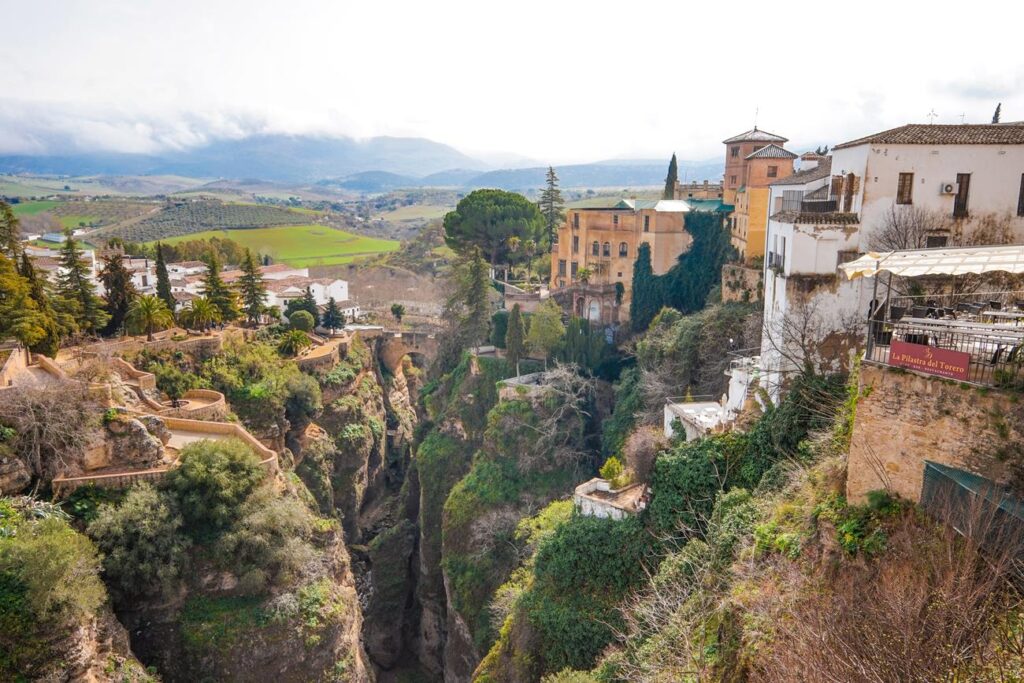
Puente Nuevo
Puente Nuevo (New Bridge) is one of the bridges towering over the El Tajo gorge. It dates back to the 18th century and is one of the most recognizable landmarks in Ronda. It was originally built in 1735 – unfortunately, after six years of use, it collapsed. Its reconstruction took several decades. The current form of the bridge is the design of the Spanish architect Jose Martin de Aldehuela.
Upon closer inspection, a small window can be seen above the central arch of the bridge. Once there was a room used as a prison – such a location of the cells effectively prevented escapes! Nearby is the Information Center, where you can learn more about the bridge. To reach it, just go down the stairs on the north side of Puente Nuevo. The ticket price is €2.5. The center is open on weekdays from 10:00 to 19:00, and on Saturdays, Sundays, and holidays until 15:00.
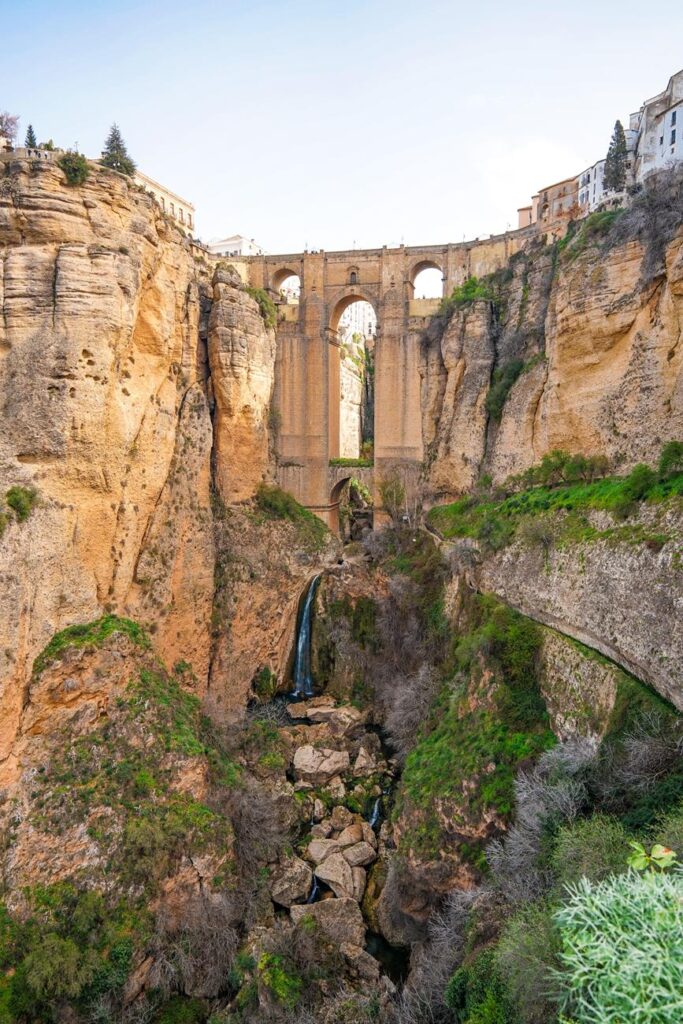
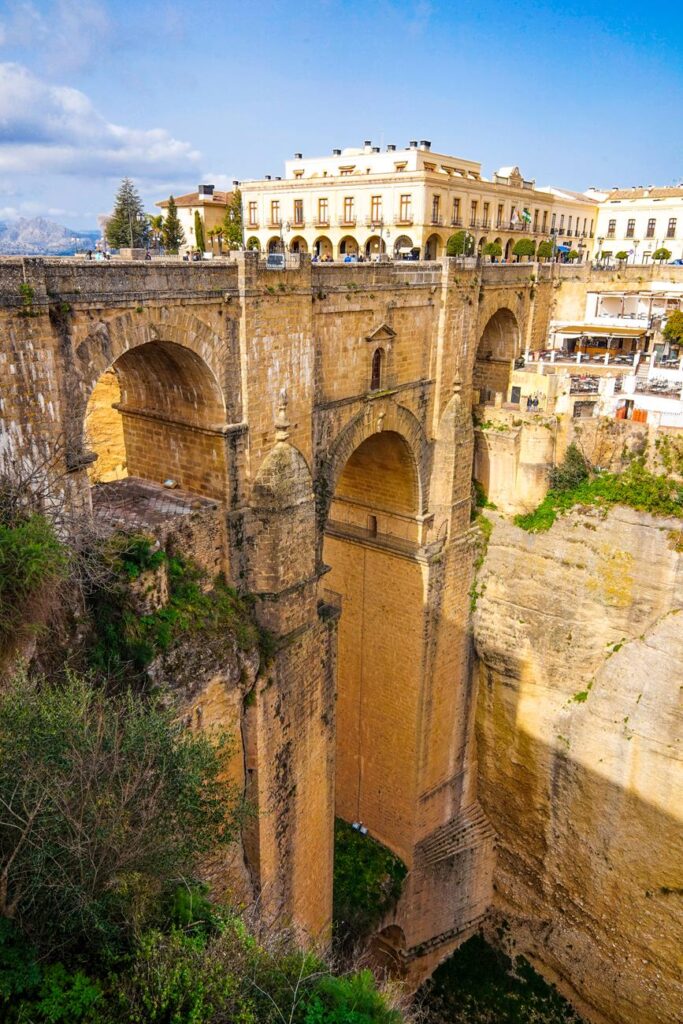
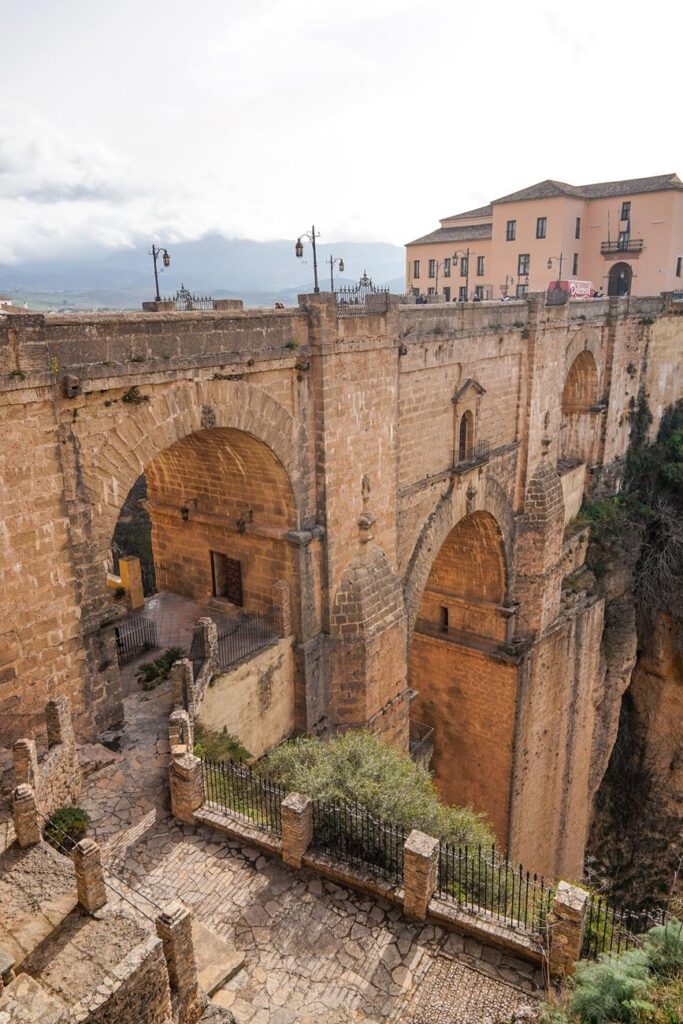
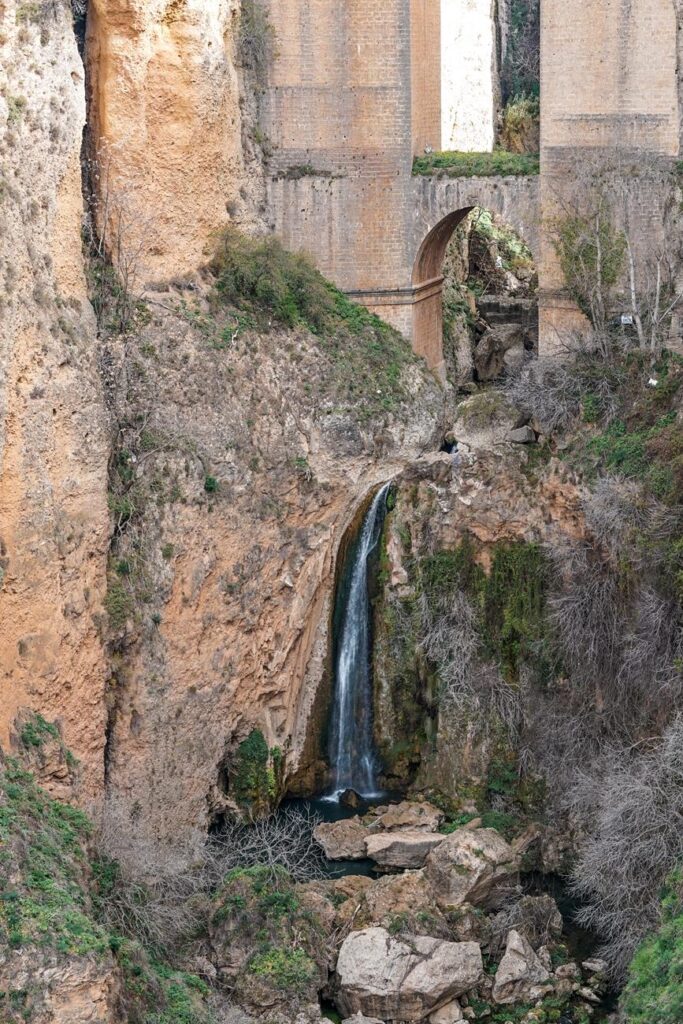
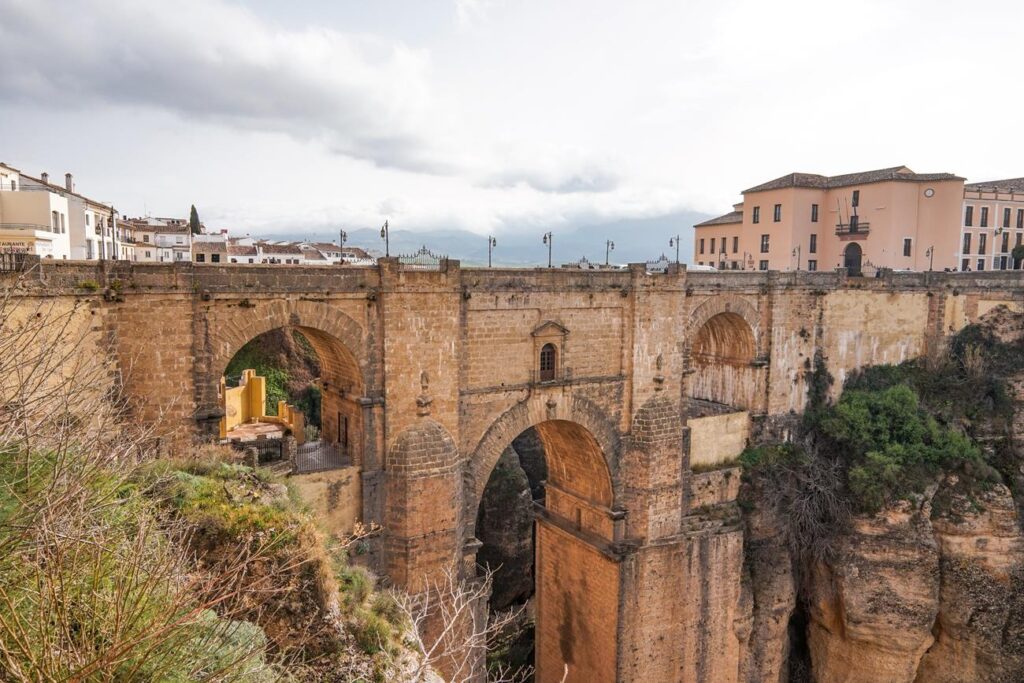
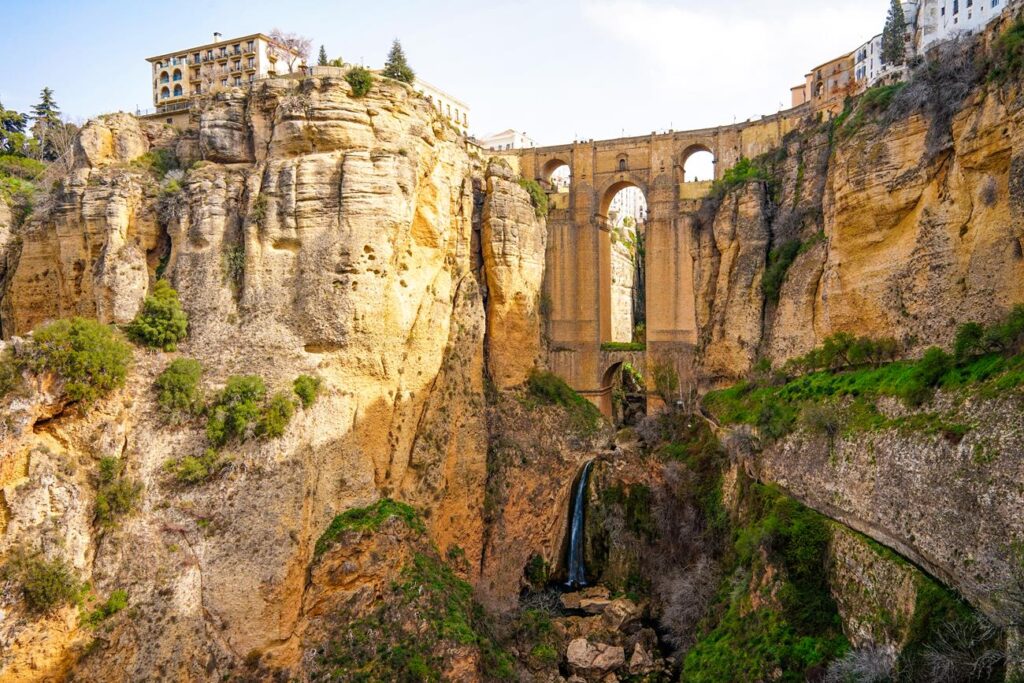
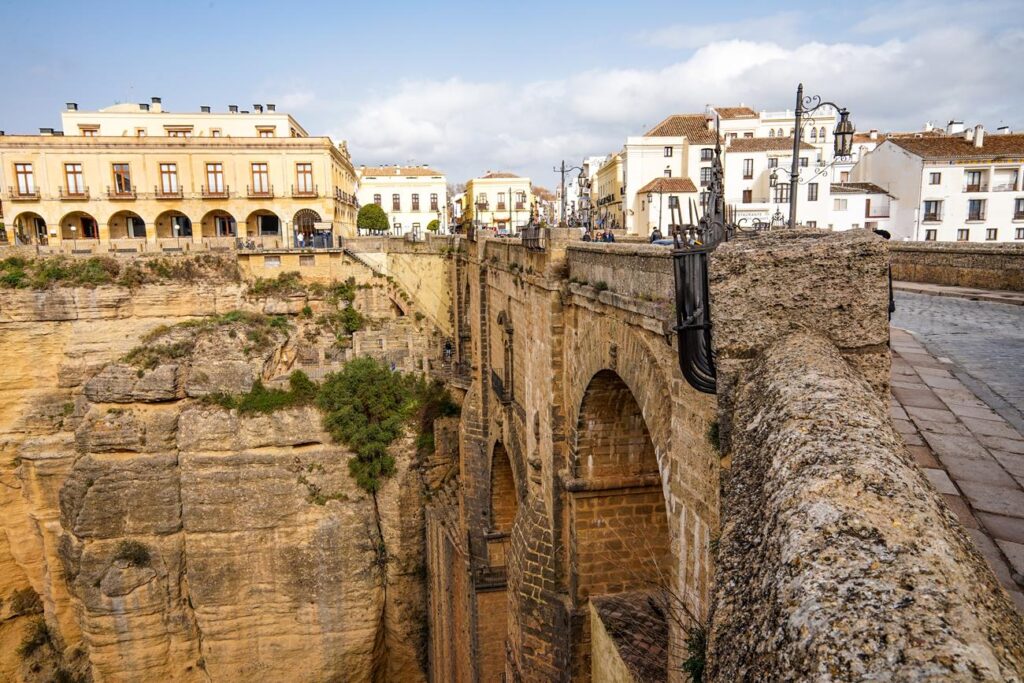
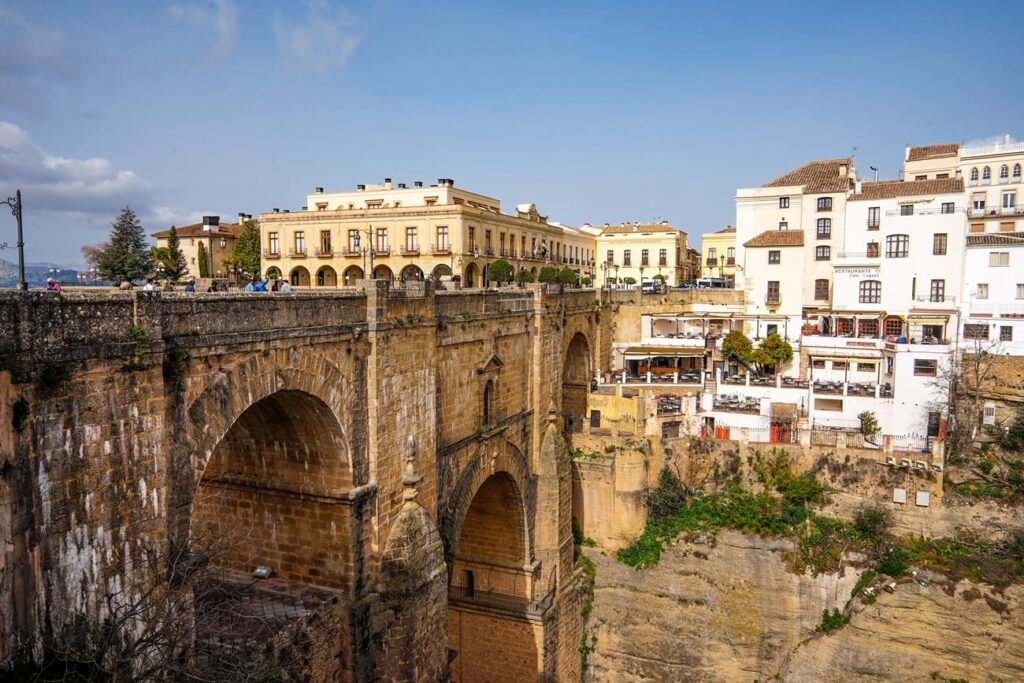
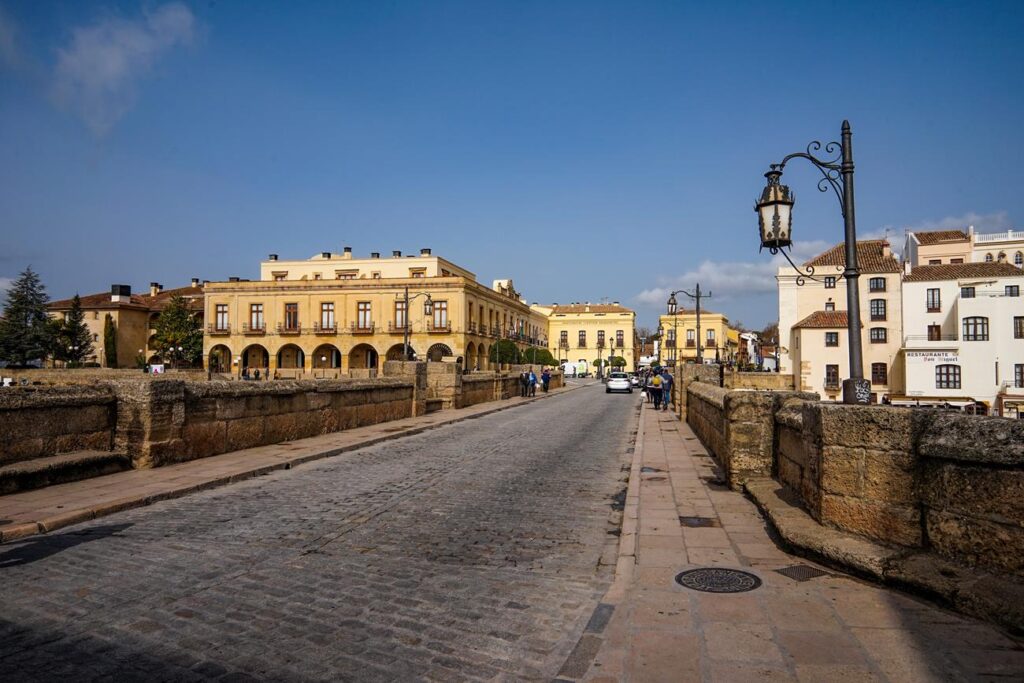
Plaza de Toros
Plaza de Toros de Ronda is a bullfighting arena with a diameter of 66 meters consisting of two levels – each with five rows and 136 Tuscan columns, which form 68 beautiful arches. The view is truly impressive! It’s no wonder that the same architect who rebuilt Puente Nuevo was responsible for the arena’s design. The stands of the arena can accommodate almost 5000 spectators.
Plaza de Toros in Ronda is one of the oldest bullfighting arenas in all of Spain; its construction was completed in 1785. It was here that the famous Pedro Romero decided to dismount and face the bull on foot, which was a shocking feat that led to a revolution. The arena can be visited throughout the year except for the first half of September due to the Corrida Goyesca festival. Admission is free, but for an additional fee of €1.5, you can rent an English audio guide.
Mirador de Ronda
Viewpoint From the Mirador de Ronda viewpoint, you can admire the western part of the city, nestled in a picturesque, somewhat rugged landscape. It is one of the most recognizable places in Ronda because the viewing terrace extends beyond the cliff wall. This fact can give many people an adrenaline rush! If you have a fear of heights, this is not the place for you.
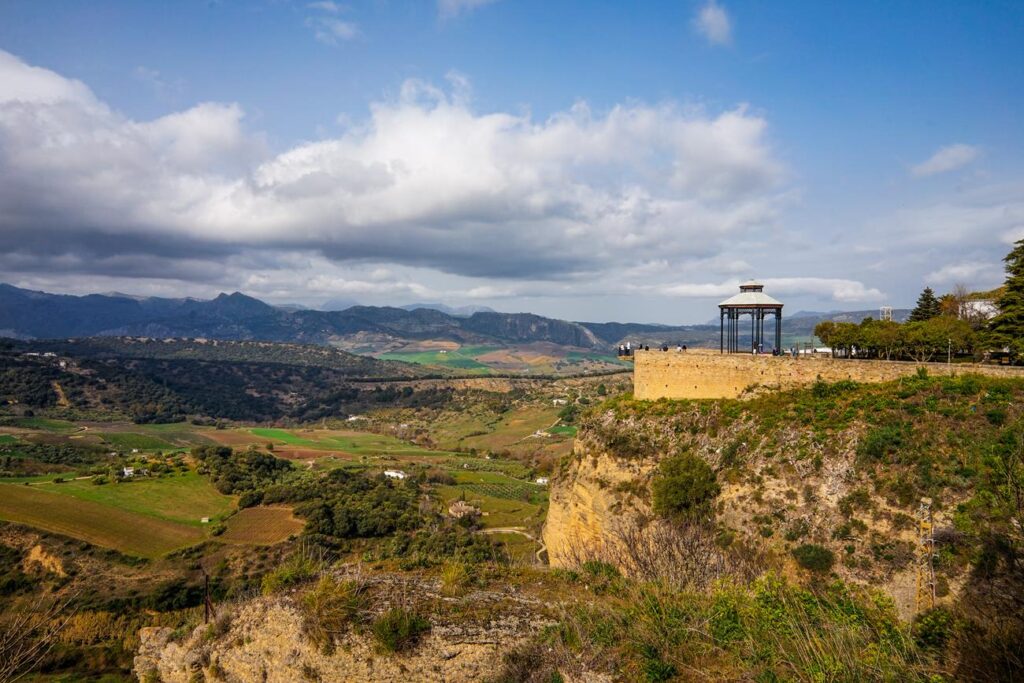
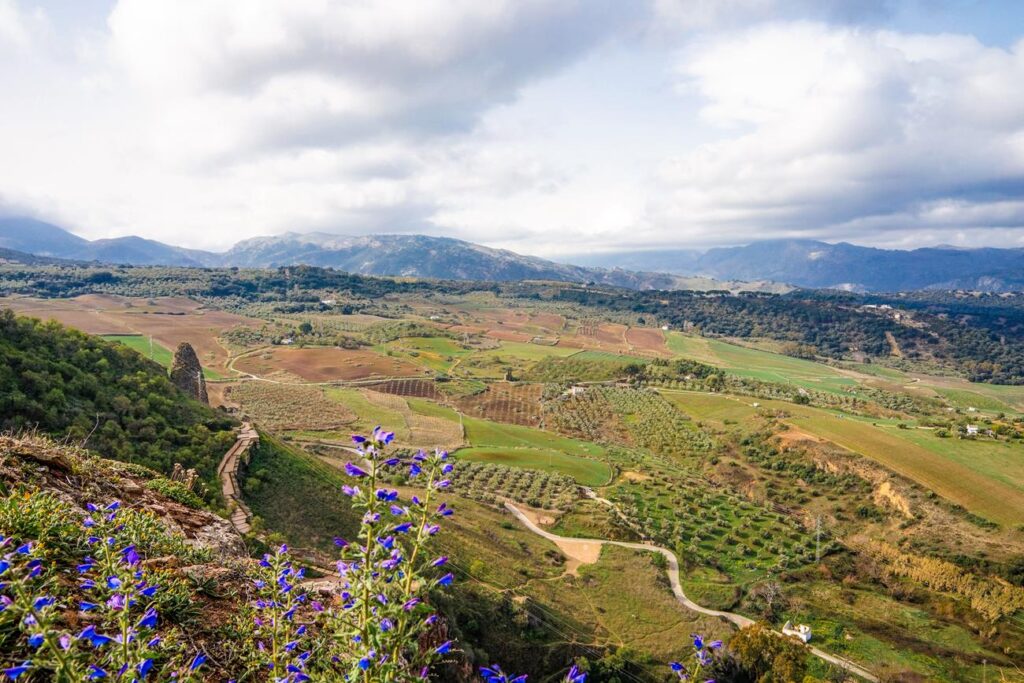
Palacio de Mondragón
Palacio de Mondragón is a palace located in the old part of Ronda. It is relatively small in size, but it is a landmark that cannot be missed! It was once the residence of a Muslim king. In the 15th century, the palace, along with the entire city, was taken over by the Catholics, which is why the building is a fusion of two styles: Islamic and Christian.
Elements of Arabic architecture have been preserved from the original version of the palace, such as Mudejar-style ceilings or inner courtyards with sculptures and balconies. A major attraction drawing numerous tourists is the stunning gardens located on the edge of the cliff, which are a perfect place for a stroll.
The municipal museum with a permanent exhibition on local natural history is located on the upper floor of the palace. On Mondays and Saturdays, it is open from 10:00 to 14:00 and from 15:00 to 18:00, from Tuesday to Friday from 9:30 to 19:00, and on Sundays and holidays from 10:00 to 15:00. The standard ticket price is €4.
Arab Walls
Long ago, Ronda could be counted among the cities in Andalusia that were very difficult to conquer – precisely because of the defensive walls that can still be admired today. Combined with guarded gates, they formed a formidable city fortification. Arrivals had to enter through the Arab Bridge and the Puerta de la Cijara gate.
Behind the mentioned Puerta de la Cijara gate is the Church of Iglesia del Espíritu Santo, which is worth a visit. For a small fee (€1), you can climb the church tower and admire the surroundings from a height.
Arab Baths
The Arab Baths in Ronda are one of the best-preserved monuments of this kind on the entire Iberian Peninsula. They are located in the old, once Arab, district of the city. They were built in the 13th century. Architecturally, the baths are somewhat similar to Roman ones, although the main difference is that hot water, or rather the steam from it, was used to cleanse the body of impurities, rather than for bathing, as the Romans used it.
The baths are divided into three parts: with cold, warm, and hot water. Their hydraulic system has remained in excellent condition to this day. It is worth knowing that it was not only a sanitary facility – according to Muslim tradition, it was also a place where both locals and guests stopped to cleanse their bodies before entering the mosque.
Puente Viejo
Puente Viejo (Old Bridge) is the second oldest bridge in Ronda. It was built at the beginning of the 17th century as a pedestrian bridge and for some time was the only connection between El Mercadillo and La Ciudad. Its appearance was modified during an 18th-century renovation.
The bridge is only 10 meters long. It is paved, and in the middle, there are viewing balconies from which you can look down into the gorge. On the north side of Puente Viejo, there is a garden with steps leading to Puente Nuevo. On the south side, there is the Philip V Gate.
Cuenca Gardens
Jardines de Cuenca are hanging gardens in Ronda, created in 1975 to honor Ronda’s partnership with the city of Cuenca. They are located on the edge of the El Tajo gorge and consist of over 20 rose terraces, which can be admired during the season. In addition to roses, native vegetation has also been planted there. The terraces are connected by stairs, so walking through them can be too tiring for small children and elderly people, although there are also places to sit and rest.
The gardens are also known as the “Mina Garden” because of their close proximity to La Mina del Agua (Water Mine), which is located on the other side of El Tajo. From the gardens, you can admire the gorge and the Guadalevín River, as well as the towering Puente Nuevo.
As you can see, Ronda has many brilliant attractions to offer! They will appeal to lovers of landmarks and those who love breathtaking nature alike. Have you already visited this town, or is this your first time reading about it? Are you planning to go there? Let me know in the comments!
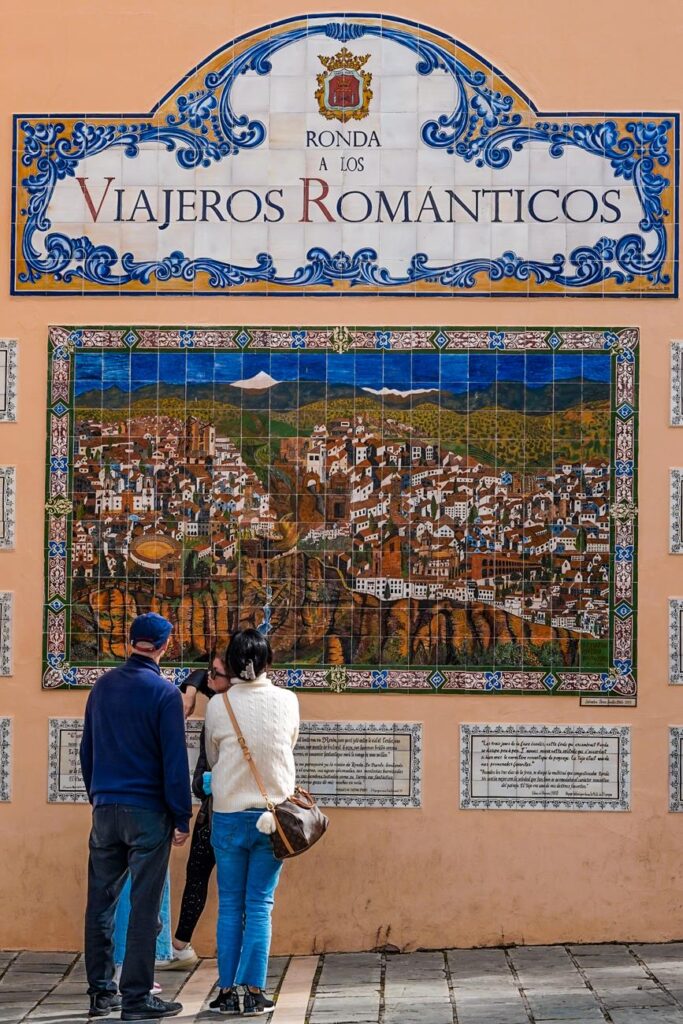
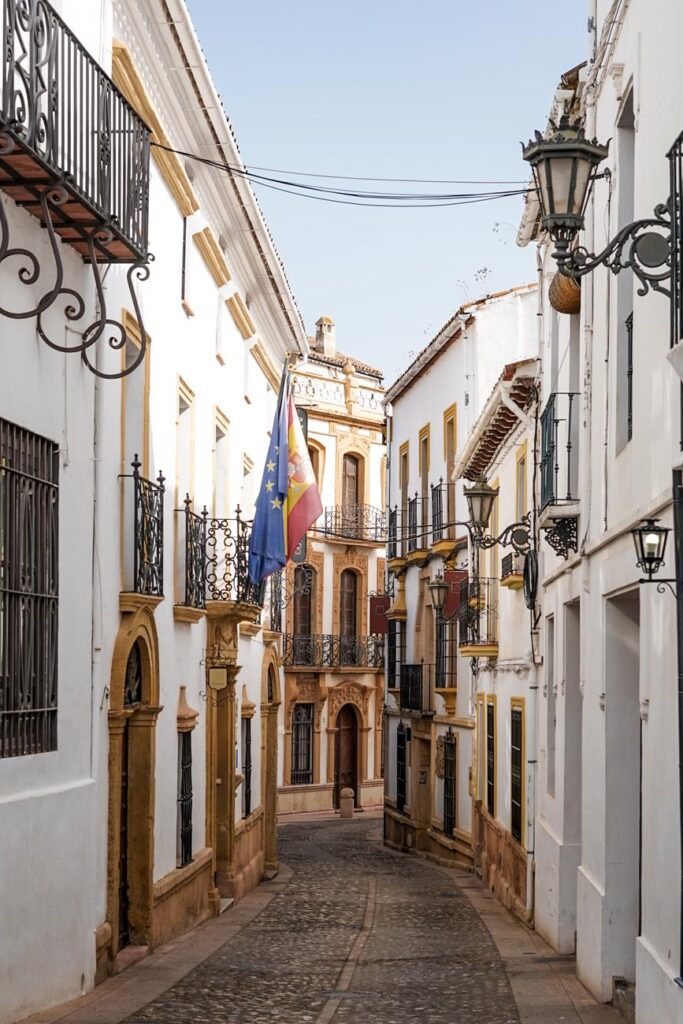
Where to Stay in Ronda?
The best accommodations If you are looking for accommodation in Ronda, you have many options to choose from, from hotels and apartments to charming guesthouses. However, it is worth knowing that it is a popular resort, so it is worth booking accommodation in advance. Here you can find a selection of the best places to stay:
What to Visit in Andalusia?
Ronda is beautiful and unique, just like Andalusia. Therefore, it is worth visiting more places in this region.
See also:
- 10 Best Places To Visit In Andalucia
- 13 Best Things to Do in Barcelona
- TOP Things to Do in Girona
- Top Things to Do in Lloret de Mar (Spain)
- Discover the Hidden Gems of Costa Brava
- Sant Feliu de Guixols: What To Do in This Catalan Town
- Discover Costa Daurada – Attractions and Beautiful Places
- Vacations in Tossa de Mar – Discover the Extraordinary Beauty of the Costa Brava
- Reus – What To See In Gaudi’s City?
- Hospitalet del Infante – Here You Spend a Beautiful Vacation
- Cami de Ronda
- Exploring Tarragona: A Comprehensive Guide
- Things to Do in Benidorm